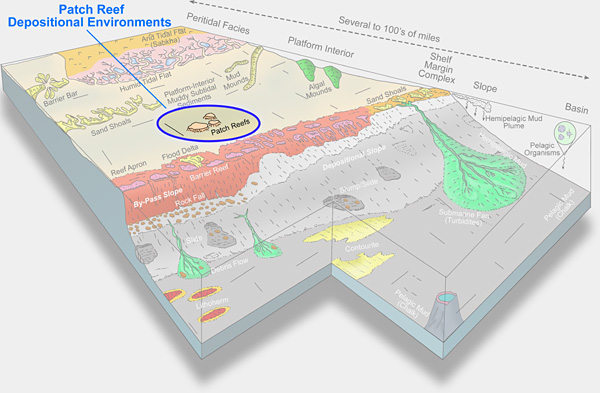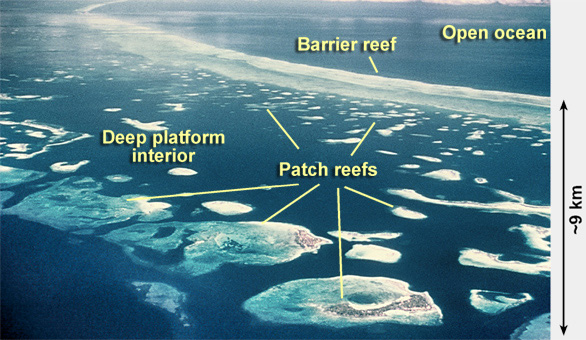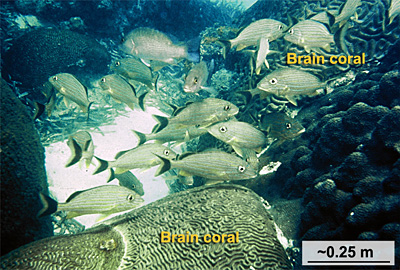 |
| Dense massive coral growth on the patch reef. |
|
| |
 |
| Dense
coral growth of platy and stick-shaped corals on the
patch reef. |
|
| |
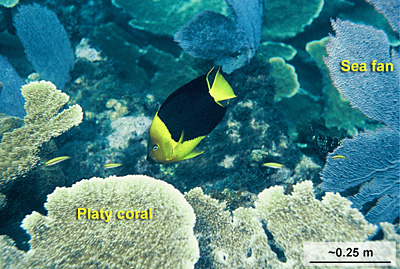 |
| Platy
coral (Acropora palmata) growing on the patch reef. |
|
| |
| |
| Rhomboid
patch reefs in southern Belize with deep central lagoons |
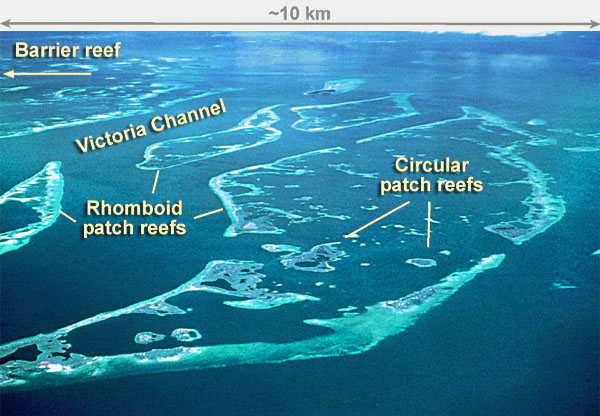 |
| Rhomboid
patch reefs in the platform interior behind the Belize barrier
reef. |
| |
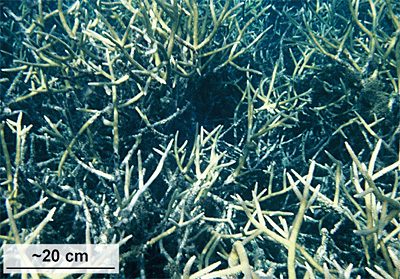 |
| Thickets
of Acropora
cervicornis coral cover the surface of the
rhomboid patch reefs. |
|
| |
| |
| Rock
Types |
| Patch
reefs are common in the ancient record, and occur as boundstones
with associated packstones and grainstones. The frame-building
organisms changed through time, but all played the same roll
of constructing a topographic, high-energy positive area relative
to the adjacent low-energy muddy or sandy areas. |
| |
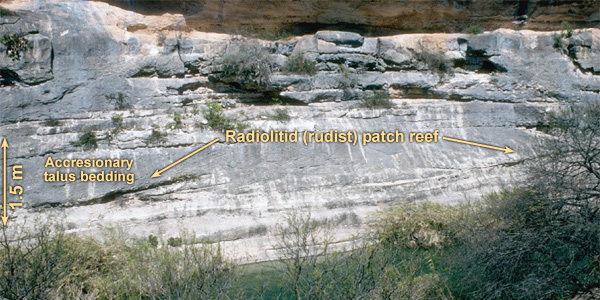 |
| Truncated
rudist patch reef with accresionary talus bedding from the
Lower Cretaceous in Texas. |
| |
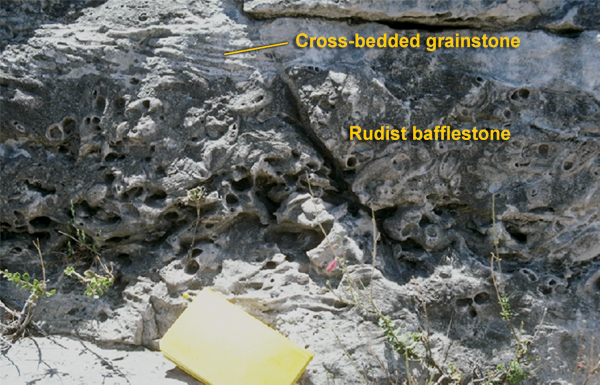 |
| Caprinid
rudist bafflestone from the Lower Cretaceous in Texas. |
| |
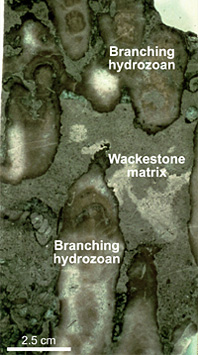 |
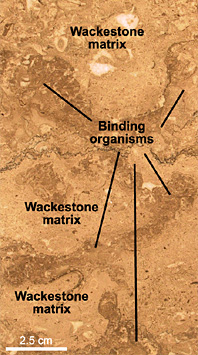 |
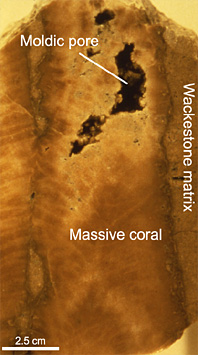 |
| Branching
hydrozoan bafflestone from a patch reef in the Lower
Cretaceous of south Texas. |
Bindstone
with wackestone matrix from a patch reef in the Lower
Cretaceous of south Texas. |
Massive
coral framestone with wackestone matrix from a patch
reef in the Lower Cretaceous of south Texas.
|
|
|
|




